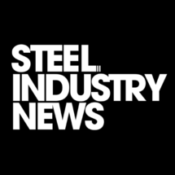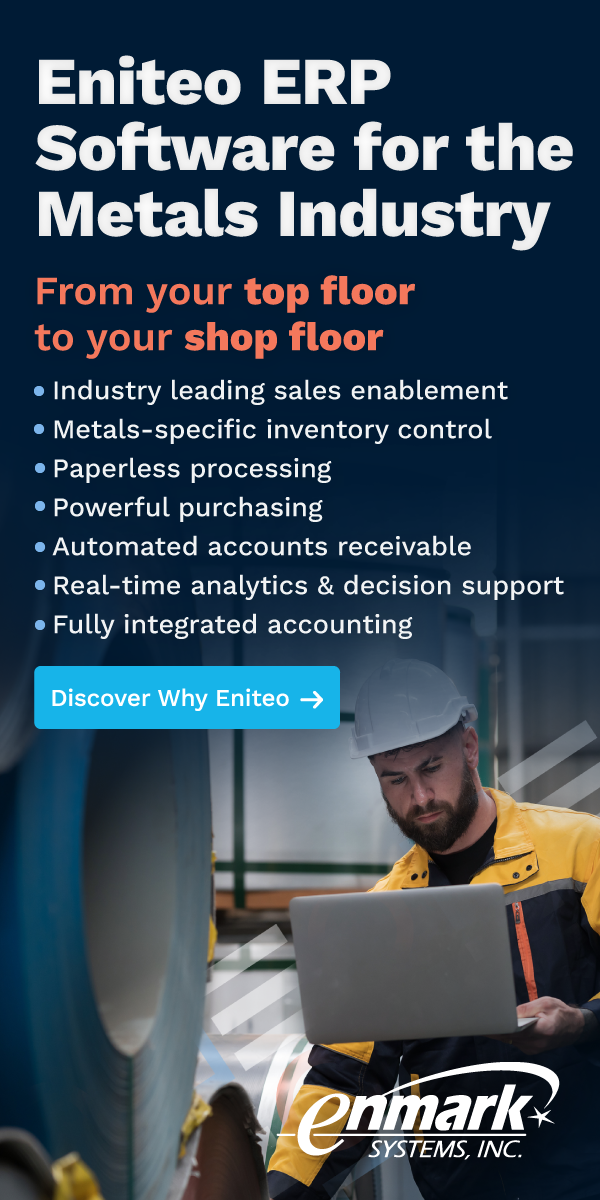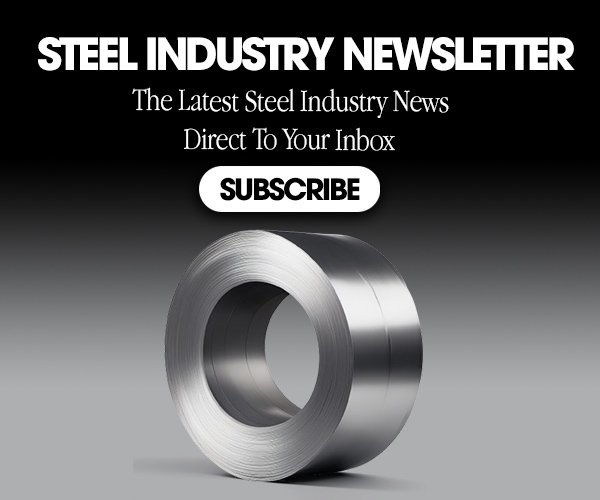✅ Key Takeaways:
- Nucor has maintained HRC base prices at $875/ton for 8 consecutive weeks, demonstrating remarkable market discipline
- Steel industry capacity utilization has recovered to 77.2% in October 2025, up from early 2025 lows below 75%
- The extended price stability reflects strategic positioning amid global steel market uncertainties and tariff impacts
Introduction
Nucor Corporation, America’s largest steel producer, has maintained its hot rolled coil (HRC) base pricing at $875 per short ton for an impressive eight consecutive weeks through October 13, 2025. This remarkable price stability in the volatile steel market represents a strategic approach to pricing that has significant implications for the broader U.S. steel industry and downstream manufacturers.
The decision to hold prices steady comes at a critical juncture for the steel industry, as companies navigate complex market dynamics including fluctuating demand, capacity utilization rates, and evolving trade policies. Nucor’s pricing discipline offers valuable insights into current market conditions and the company’s strategic positioning in the face of global steel market uncertainties.

Nucor’s HRC pricing showing 8 consecutive weeks of stability at $875/ton
Understanding Nucor Corporation: America’s Steel Giant
Nucor Corporation stands as a titan in the North American steel industry, holding the distinction of being the largest and most diversified steel producer in the United States. Based in Charlotte, North Carolina, the company operates an extensive network of 26 steel mills with an annual production capacity exceeding 27 million tons.
The company’s market dominance is evident in its production figures, as Nucor produces approximately 25% of all raw steel manufactured in the United States. This substantial market share positions the company as a key price setter and market influencer, making its pricing decisions particularly significant for the broader industry.
Nucor’s operational philosophy centers on Electric Arc Furnace (EAF) technology, which enables the company to produce steel using at least 75% recycled content on average. This approach not only supports environmental sustainability but also provides operational flexibility, allowing Nucor to rapidly adjust output in response to real-time market demand fluctuations.
The company’s diversified operations extend beyond steelmaking to include more than 300 operating facilities across North America, encompassing steel products fabrication centers and a vertically integrated raw materials segment with approximately 10 million tons of annual direct reduced iron (DRI) and scrap recycling capacity. This vertical integration provides Nucor with significant cost advantages and supply chain control, contributing to its ability to maintain competitive pricing strategies.
The Hot Rolled Coil Steel Market Landscape
Hot rolled coil (HRC) steel represents one of the most fundamental products in the steel industry, serving as a critical input for numerous downstream applications. The global HRC steel market was valued at approximately $355.22 billion in 2024 and is projected to reach $435.65 billion by 2030, representing a compound annual growth rate (CAGR) of 5.7%.
In the United States specifically, the HRC steel market was valued at $27.68 billion in 2024 and is expected to grow at a CAGR of 5.2% from 2025 to 2030. This growth trajectory is primarily driven by strong demand from key sectors including construction, automotive, energy, and heavy machinery.
The construction and infrastructure sectors represent the largest end-use market for HRC steel, accounting for over 42% of global market share in 2024. This significant demand driver stems from HRC steel’s high strength and weldability, making it an essential material for structural frameworks, bridges, rail tracks, and heavy machinery applications.
The oil and gas sector also represents a substantial market for HRC steel, utilizing the material for pipelines, drilling platforms, and storage tanks, particularly in offshore and high-pressure environments where durability is critical. This diversified demand base provides stability to the HRC market while also creating exposure to various economic cycles and industry-specific factors.
Factors Influencing Steel Pricing Dynamics
Steel pricing is influenced by a complex interplay of factors that can create significant volatility in the market. Understanding these factors is crucial for analyzing Nucor’s decision to maintain stable pricing over an extended period.
Supply and Demand Fundamentals
The most fundamental driver of steel pricing remains the classic economic principle of supply and demand. When economic activity is robust, construction, manufacturing, and infrastructure projects typically increase, leading to higher steel demand and subsequently higher prices. Conversely, during economic downturns, steel demand can decline, potentially leading to lower prices if supply remains constant or increases.

US steel industry capacity utilization showing recovery from Q1 2025 lows
Raw Material Costs and Energy Prices
Steel production costs are significantly influenced by the prices of raw materials, particularly iron ore, coking coal, zinc and scrap steel. For companies like Nucor that rely heavily on Electric Arc Furnace technology, scrap steel prices are particularly important as they represent the primary input material.
Energy costs also play a crucial role in steel pricing, as steel production is energy-intensive. Fluctuations in electricity, natural gas, and oil prices can directly impact production costs and, consequently, steel prices. The correlation between oil prices and steel prices is particularly evident in international shipping costs, where rising oil prices lead to higher transportation costs for imported steel.
Currency Exchange Rates and Global Economic Conditions
Currency exchange rates can significantly influence steel pricing, particularly for companies engaged in international trade. A weaker U.S. dollar makes imports more expensive while making exports more competitive, potentially supporting higher domestic steel prices.
Global economic conditions, including GDP growth rates, manufacturing activity, and construction spending, provide important indicators of steel demand. Current economic indicators suggest mixed conditions, with some sectors showing strength while others face challenges from uncertainty and evolving trade policies.
The Strategic Significance of Nucor’s 8-Week Price Stability
Nucor’s decision to maintain HRC pricing at $875 per short ton for eight consecutive weeks represents a significant strategic choice that reflects several important market dynamics and company considerations.
Current Market Conditions and Industry Outlook
The steel industry in 2025 faces a complex set of market conditions that influence pricing decisions and strategic planning. Understanding these conditions provides important context for analyzing Nucor’s pricing strategy.
Demand Drivers and Market Segments
Current steel demand is being driven by several key factors, including federal infrastructure programs that significantly boost steel consumption for large-scale public works projects. The ongoing investments in pipeline and drilling infrastructure in the oil and gas sector continue to support HRC steel demand.
The revival of domestic manufacturing and reshoring efforts further supports market expansion as companies seek to strengthen domestic supply chains and reduce reliance on foreign production. These trends are supported by federal programs such as the CHIPS Act and the Inflation Reduction Act, which have led to significant increases in manufacturing construction spending.
However, demand conditions are not uniformly strong across all sectors. European markets, for instance, are experiencing continued challenges, with apparent steel consumption projected to decline by 0.9% in 2025 for the fourth consecutive year. This weakness in international markets can impact global steel dynamics and trade flows.
Capacity Utilization and Production Trends
U.S. steel industry capacity utilization rates provide important insights into market conditions. Current utilization rates of approximately 77.2% indicate that while the industry is operating at reasonable levels, there remains available capacity to meet increased demand.
Year-to-date production through October 4, 2025, reached 68.5 million net tons, representing a 2.3% increase from the same period in 2024. This moderate growth suggests steady but not overwhelming demand conditions that support stable pricing strategies.
Global capacity additions present potential challenges for the industry. According to OECD analysis, global steel capacity excess is expected to surge by 165 million tons by 2027, potentially pushing total overcapacity to well above 700 million tons. This massive capacity expansion could drive utilization rates down to approximately 70% from current levels, creating structural oversupply challenges.
Comparing Nucor’s Pricing Strategy with Industry Trends
Nucor’s pricing stability stands in contrast to some competitors and broader market trends, providing insights into different strategic approaches within the industry.
Impact on Downstream Industries and Customers
Nucor’s pricing stability has significant implications for downstream industries and customers that rely on steel inputs for their operations.
Construction and Infrastructure Sectors
The construction and infrastructure sectors represent the largest consumers of HRC steel, and pricing stability provides important benefits for project planning and cost management. Construction projects often have long lead times and fixed budgets, making steel price predictability valuable for contractors and developers.
Current federal infrastructure programs are driving significant steel demand, with programs like the Infrastructure Investment and Jobs Act supporting large-scale construction projects. Stable steel pricing helps ensure that these programs can be completed within budget and on schedule.
Automotive Industry Impact
The automotive industry is another major consumer of steel products, and pricing stability can impact vehicle production costs and pricing strategies. With the industry undergoing significant transformation toward electric vehicles and advanced manufacturing techniques, predictable input costs become increasingly important for long-term planning.
Steel represents a significant portion of vehicle weight and cost, making price stability particularly valuable for automotive manufacturers managing thin profit margins and intense competition.
Manufacturing and Industrial Equipment
Various manufacturing and industrial equipment sectors rely on steel inputs, and pricing stability can impact their competitiveness and operational planning. Companies in these sectors often operate on long-term contracts and production schedules, making input cost predictability valuable for maintaining profitability.
The reshoring trend in manufacturing makes domestic steel pricing particularly important, as companies seek to reduce supply chain risks and improve delivery times by sourcing materials locally.
Future Outlook and Strategic Considerations
Looking ahead, several factors will influence Nucor’s pricing strategies and the broader steel market outlook.
Strategic Positioning and Competitive Advantages
Nucor’s integrated business model, combining steelmaking, steel products, and raw materials operations, provides strategic advantages that support stable pricing strategies. The company’s position as North America’s largest recycler creates supply chain advantages and cost benefits that competitors may find difficult to replicate.
The company’s financial strength and investment grade credit ratings provide flexibility to invest in growth opportunities, technology advancement, and market expansion while maintaining competitive pricing strategies.
Market Intelligence and Competitive Analysis
Market intelligence services indicate that Nucor’s pricing levels are positioned at the higher end of current market ranges, suggesting that the company’s brand strength and operational advantages support premium pricing. This premium positioning reflects the value customers place on Nucor’s reliability, quality, and service capabilities.
Competitive analysis suggests that Nucor’s pricing discipline may influence competitor behavior and overall market stability. When market leaders maintain stable pricing, it can reduce overall market volatility and support industry profitability.
Industry Outlook and Recommendations
Industry experts generally recommend that steel companies focus on operational efficiency, customer service, and strategic positioning rather than competing primarily on price. This approach aligns with Nucor’s strategy of maintaining stable pricing while focusing on operational excellence and customer satisfaction.
Long-term success in the steel industry is increasingly viewed as dependent on technological advancement, environmental performance, and financial strength rather than short-term pricing strategies. Companies that invest in these areas while maintaining competitive pricing are likely to outperform over time.
Conclusion
Nucor Corporation’s decision to maintain hot rolled coil pricing at $875 per short ton for eight consecutive weeks represents a sophisticated strategic approach that reflects the company’s market leadership position, operational advantages, and long-term vision. This pricing stability demonstrates remarkable market discipline in an industry historically characterized by volatility and provides valuable insights into current market conditions and strategic thinking.
The extended period of price stability occurs against a backdrop of complex market dynamics, including moderate demand growth, available production capacity, significant tariff protection, and ongoing global trade tensions. Nucor’s ability to maintain consistent pricing while competitors pursue different strategies suggests confidence in current market positioning and the sustainability of current price levels.
Key factors supporting Nucor’s pricing stability include the company’s position as America’s largest steel producer, operational flexibility provided by Electric Arc Furnace technology, vertical integration advantages, and strong financial position. These competitive advantages enable the company to focus on operational excellence and customer service rather than competing primarily on price.
The broader implications of Nucor’s pricing strategy extend beyond the company itself to influence competitor behavior, customer planning, and overall market stability. By maintaining predictable pricing, Nucor provides value to customers while potentially encouraging more rational pricing behavior across the industry.
Looking ahead, Nucor’s pricing strategy will likely continue to reflect the company’s assessment of market conditions, competitive dynamics, and strategic objectives. The success of this approach will ultimately be measured by the company’s ability to maintain market share, profitability, and customer satisfaction while navigating ongoing industry challenges and transformation.
The steel industry’s future will be shaped by technological advancement, environmental requirements, and evolving end-use market demands. Companies like Nucor that successfully balance pricing discipline with strategic investment in capabilities and competitive advantages are likely to outperform in this evolving landscape.
For industry participants and observers, Nucor’s pricing stability offers important lessons about the value of market leadership, operational excellence, and strategic patience in managing through volatile market conditions. As the steel industry continues to evolve, these principles will likely remain relevant for achieving sustainable competitive success.
Disclaimer:
The content provided in this article is for general informational purposes only and does not constitute financial, legal, or professional advice. Readers should seek consultation with qualified professionals before making any financial, investment, or legal decisions. We disclaim any liability for losses, damages, or adverse outcomes resulting from decisions made based on the information presented herein.
SOURCES
Steel – Price – Chart – Historical Data – News – https://tradingeconomics.com/commodity/steel
Nucor Raises Hot-Rolled Coil Prices in Response to Market Trends – https://www.indexbox.io/blog/nucor-adjusts-hot-rolled-coil-prices-amid-market-fluctuations/
Nucor CSP Price Flat, Other Major Indexes Soften – https://www.worldsteeldynamics.com/nucor-csp-price-flat-other-major-indexes-soften/
Nucor Reduces Hot-Rolled Coil Prices in Response to Market Fluctuations – https://www.indexbox.io/blog/nucor-adjusts-hot-rolled-coil-prices-amid-market-fluctuations-2/
Nucor Announces Guidance for the Third Quarter of 2025 Earnings – https://nucor.com/news-release/nucor-announces-guidance-for-the-third-quarter-of-2025-earnings-122978
Nucor lowers hot-rolled coil prices to $875/t – https://gmk.center/en/news/nucor-lowers-hot-rolled-coil-prices-to-875-t/
Steel Market Forecast 2025-2026 | Global Price Outlook – https://www.steelonthenet.com/market-outlook.html
US steel production and utilization rates for 2025 – https://www.linkedin.com/posts/alan-patrick-ryan-a26448a_us-steel-capacity-utilization-dips-to-below-activity-7373461874757251072-BGxj
Trump’s tariffs hit steel market hard as recession and weak demand persist into 2025 – https://www.eurofer.eu/press-releases/trumps-tariffs-hit-steel-market-hard-as-recession-and-weak-demand-persist-into-2025
OECD Steel Outlook 2025 – https://www.oecd.org/en/publications/2025/05/oecd-steel-outlook-2025_bf2b6109.html
Industry Data – American Iron and Steel Institute – https://www.steel.org/industry-data/
Global Metals and Steel Industry Trends 2025/2026 – https://group.atradius.com/knowledge-and-research/reports/global-metals-and-steel-industry-trends-2025-2026
United States Steel Production – https://tradingeconomics.com/united-states/steel-production
The Boom in New Steel Mills Is Outpacing Demand – https://www.wsj.com/finance/commodities-futures/steel-industry-factory-growth-demand-184410d1
May 2025 crude steel production – https://worldsteel.org/media/press-releases/2025/may-2025-crude-steel-production/
Nucor – Wikipedia – https://en.wikipedia.org/wiki/Nucor
Hot Rolled Coil Steel Market Size | Industry Report, 2030 – https://www.grandviewresearch.com/industry-analysis/hot-rolled-coil-steel-market-report
Company overview – Nucor – Investor Relations – https://investors.nucor.com/why-invest/default.aspx
What Factors Impact Steel Prices and Supplier Value? – https://westfieldsteel.com/2024/02/what-factors-impact-steel-supplier-pricing-and-value/
U.S. Hot Rolled Coil Steel Market | Industry Report, 2034 – https://www.polarismarketresearch.com/industry-analysis/us-hot-rolled-coil-steel-market
Nucor Corporation | LinkedIn – https://www.linkedin.com/company/nucor-corporation
What factors influence the price of steel? – https://spahrmetric.com/what-factors-influence-the-price-of-steel/
Hot Rolled Coil Steel Market Report: Trends, Forecast – https://www.researchandmarkets.com/reports/5929046/hot-rolled-coil-steel-market-report-trends
Company – Nucor – http://nucor.com/company
5 Factors that Influence The Price of Steel – https://www.raecobuilders.com/blog/2024/8/22/5-factors-that-influence-the-price-of-steel
U.S. Hot Rolled Coil Steel Market Size & Share Report, 2030 – https://www.grandviewresearch.com/industry-analysis/us-hot-rolled-coil-steel-market-report
How Market Volatility Affects Steel Prices and Order Quantities – https://www.meadmetals.com/blog/how-market-volatility-affects-steel-prices-and-order-quantities
Nucor | North America’s largest steel manufacturer and recycler – http://nucor.com
Check out our most recent articles below:
- Nucor’s Six-Week Price Surge: What It Signals for the Steel Market
- Nucor Increases Steel Prices Again
- Steel Industry and Manufacturing Demand: Understanding the Critical Decline in HVAC and Agricultural Equipment Sectors in 2025
- Steel Prices in November 2025: Market Dynamics, Price Drivers, and Industry Outlook
- The Dodge Momentum Index October 2025: Understanding Commercial Planning Momentum and Its Impact on Construction Spending
📬 Enjoying this article? Do not miss the next one.
SUBSCRIBE below to the Steel Industry News email newsletter to get the latest updates delivered straight to your inbox. Includes a comprehensive reporting of all key topics impacting the steel industry. 🌍The Most Recent Steel News Reports — in one easy-to-read weekly format
🔐 Annual Plan: Just $300/year – that’s 6 months free (a 50% discount compared to monthly)








